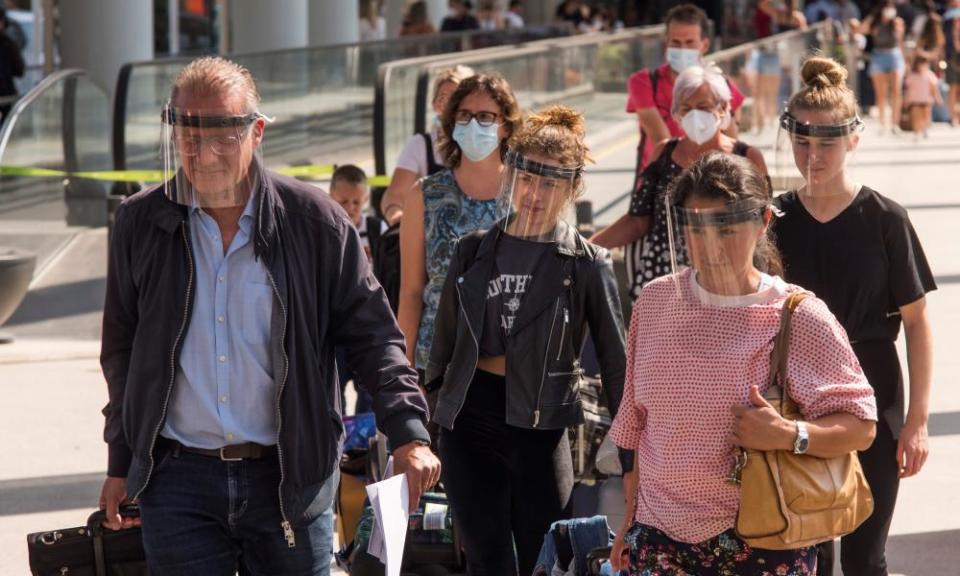Reimposition of quarantine hits Spain’s vital, already struggling tourism sector

The British government’s decision to pull Spain from the list of safe countries and require returning holidaymakers to self-isolate for a fortnight will come as a heavy blow to Spain’s lucrative and vital tourist sector.
The country, which relies on tourism for 12% of its GDP, was already expecting a bleak post-Covid summer.
But the UK decision – combined with the French government’s advice against travelling to Catalonia, and Norway’s reimposition of a 10-day quarantine requirement for people arriving from Spain – is likely to torpedo Spain’s faltering tourist recovery.
Belgium has also banned non-essential travel to the north-eastern areas of Huesca and Lleida, and recommended against travel to a number of other Spanish areas.
More than 18 million Britons visited Spain last year, accounting for one fifth of all foreign visitors.
“This is devastating news,” said Michelle Baker, editor of the Round Town Times newspaper in Benidorm, a favourite resort among British tourists.
“We were just getting back on our feet and this will send us back into stagnation. It’s so unfair, we’re all wearing marks here and there are only 14 cases in the whole of Alicante. The outbreaks are nowhere near here.”
We were just getting back on our feet and this will send us back into stagnation. It’s so unfair
Michelle Baker
The Catalan hoteliers’ association, meanwhile, says 20% of reservations have been lost since the French announcement on Friday. Anger and frustration within the tourist sector – not to mention the Spanish government – is likely to be exacerbated as the UK’s move comes days after the Scottish government announced that border health measures requiring people to quarantine for 14 days on arrival into Scotland were to be lifted for those arriving from Spain, only to reverse the decision last night.
The measure will also cause bafflement in a country that went into one of Europe’s strictest lockdowns nine days before the UK, and where the wearing of face masks in public places has been compulsory since 21 May.
But despite the success of the state of emergency, which ended on 21 June, Spain has seen a resurgence of new infections over recent weeks.
Spanish health authorities said this week that they were dealing with 283 active outbreaks, many of them in the northeastern regions of Catalonia and Aragón.
On Thursday, the government of the south-eastern region of Murcia ordered the 32,000 inhabitants of Totana back into the second phase of lockdown reduction after 55 cases were traced to a bar in the town.

Two days later, the Catalan government ordered all nightclubs to close for a fortnight and placed a midnight curfew on bars in and around Barcelona and Lleida, both of which have seen a rise in new cases.
While health authorities have acknowledged that a second wave may have hit, they insist all outbreaks are being swiftly detected and isolated.
On Friday, the health ministry logged 922 new Covid-19 cases – slightly down from 971 over the previous 24 hours.
María José Sierra, the deputy head of Spain’s centre for health emergencies, said that while the curve had been flattened, “community transmission” was being seen in north-eastern areas.
“It could already be a second wave, but that’s not the most important thing,” Sierra told reporters on Thursday. “The most important thing is that we keep following what’s going on, see what measures are necessary, and take them early.”
She also said people needed to remember the incidence of the virus had tripled in just two weeks, from 8.8 cases per 100,000 people on 3 July to 27.4 per 100,000.
“Obviously, the curve is going up, but let’s wait to see what kind of situation we’re in,” she added.

